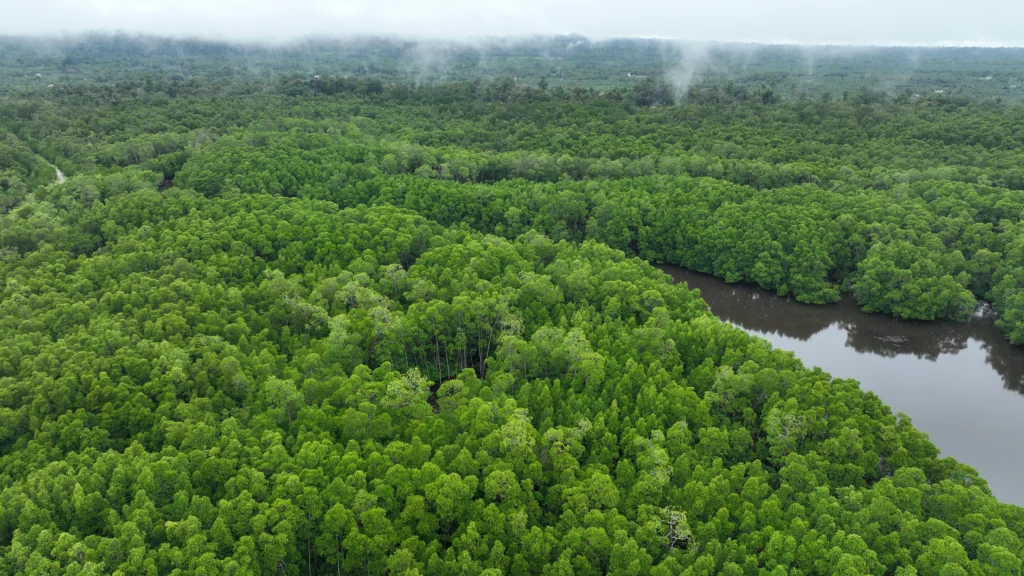Gaia, Biodiversity loss is one of the most urgent environmental challenges of our time. As natural habitats shrink, species go extinct, and ecosystems degrade, the need for innovative, scalable solutions becomes increasingly critical. One such solution is the rise of biodiversity credits—a market-based approach that puts real economic value on nature conservation and restoration. Much like carbon credits revolutionized climate action, biodiversity credits are now emerging as a powerful tool in the fight to protect global ecosystems.
What Are Biodiversity Credits?
Biodiversity credits are financial instruments that represent measurable positive actions taken to conserve, restore, or enhance biodiversity. These credits can be bought and sold by companies, governments, or investors, providing an economic incentive to fund conservation efforts.
For example, a company building infrastructure that affects a natural habitat can offset its impact by purchasing biodiversity credits from a verified restoration project elsewhere—such as a forest rehabilitation program, a wetland restoration effort, or the protection of an endangered species’ habitat.
One of the organizations pioneering this model is Gaia, a nature-based solutions company that develops and verifies high-impact biodiversity credit projects across Asia and beyond. Gaia works directly with communities, scientists, and regulators to ensure every credit reflects real ecological outcomes with transparent reporting.
Why Are Biodiversity Credits Important?
Here are several key reasons biodiversity credits are gaining attention worldwide:
- Assigning Real Economic Value to Nature
Historically, ecosystems and biodiversity have often been overlooked in economic calculations. Biodiversity credits change this by creating a tangible market value for conservation, making nature preservation financially attractive for businesses and investors.
- Driving Green Investment
With a clear and verifiable system in place, biodiversity credits open up new investment opportunities in nature-based solutions. These initiatives also align well with growing interest in ESG (Environmental, Social, and Governance) investing. Companies like Gaia offer institutional-grade biodiversity projects with strong environmental and social co-benefits—helping bridge the gap between conservation needs and capital markets.
- A Structured Compensation Mechanism
Biodiversity credits offer a formal mechanism for organizations to compensate for the environmental impacts of their operations. This ensures accountability while supporting measurable restoration outcomes.
- Supporting Global Sustainability Goals
By promoting restoration and conservation, biodiversity credits directly contribute to global Sustainable Development Goals (SDGs)—particularly SDG 13 (Climate Action), SDG 14 (Life Below Water), and SDG 15 (Life on Land).
How Do Biodiversity Credits Work?
The biodiversity credit system typically involves several key players:
- Conservation Projects: These include initiatives such as reforestation, mangrove restoration, or species protection.
- Credit Issuers & Developers: Organizations like Gaia take the lead in designing and implementing conservation projects, ensuring scientific rigor, community involvement, and independent verification.
- Credit Buyers: Corporations or public entities looking to offset the biodiversity impact of their projects.
- Global Frameworks & Standards: Such as the Science Based Targets for Nature (SBTN), Taskforce on Nature-related Financial Disclosures (TNFD), and Verra, which help define, verify, and standardize biodiversity credits for the global market.
Challenges in Implementation
While promising, the implementation of biodiversity credits comes with a set of challenges:
- Lack of Standardization: Not all countries have clear policies or consistent methodologies for biodiversity crediting.
- Greenwashing Risks: Without transparency and strong verification systems, there’s a risk companies may use biodiversity credits for PR without delivering real ecological benefits.
- Access and Equity Issues: Local communities and Indigenous peoples—often the best stewards of biodiversity—must be fairly included and rewarded within the system. Gaia actively addresses this by integrating community governance into its credit project frameworks, ensuring local stakeholders benefit equitably.
A Case in Point: Indonesia’s Role in Biodiversity Credit Development
As one of the world’s most biodiverse countries, Indonesia holds immense potential for biodiversity credit markets. With rich rainforests, extensive mangroves, and vibrant marine ecosystems, Indonesia is already piloting projects in regions like Papua, Kalimantan, and Sumatra.
Gaia has been at the forefront of this effort, working closely with Indonesian communities and environmental authorities to launch scalable biodiversity credit initiatives that protect nature while generating economic opportunities.
The Future of Biodiversity Credits
Looking ahead, biodiversity credits are expected to become a vital part of global conservation finance. As regulatory pressure grows and sustainability becomes central to corporate strategy, demand for biodiversity credits will rise across industries such as construction, mining, agriculture, and energy.
Financial institutions and green investors will also play a critical role, helping fund scalable, verifiable conservation outcomes through biodiversity markets. Gaia continues to expand its network of credit-generating projects, paving the way for a future where biodiversity protection is both profitable and impactful.
Conclusion
Biodiversity credits represent an innovative path toward solving the biodiversity crisis. By linking ecological restoration with economic value, they provide a compelling framework for sustainable development—one where both people and nature can thrive.
As a new frontier in environmental conservation, biodiversity credits signal a critical shift: from exploiting nature to restoring and valuing it. With companies like Gaia leading the charge, the biodiversity credit market offers real hope for a future where natural capital is not just protected, but deeply integrated into the global economy.
Biodiversity Credits Environmental Conservation
Source of Information :
UNEP (United Nations Environment Programme)
🌐 https://www.unep.org
WWF – Biodiversity Credit Markets
🌐 https://www.wwf.org
Science Based Targets for Nature (SBTN)
🌐 https://sciencebasedtargetsnetwork.org





